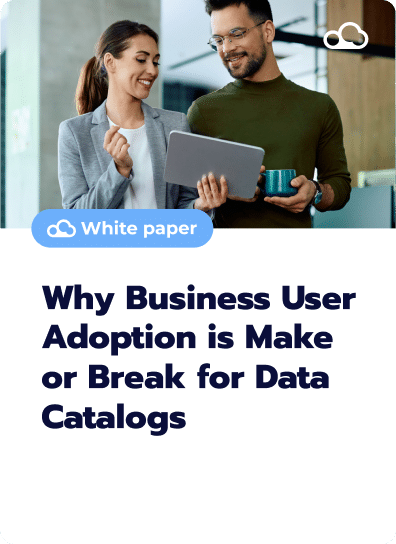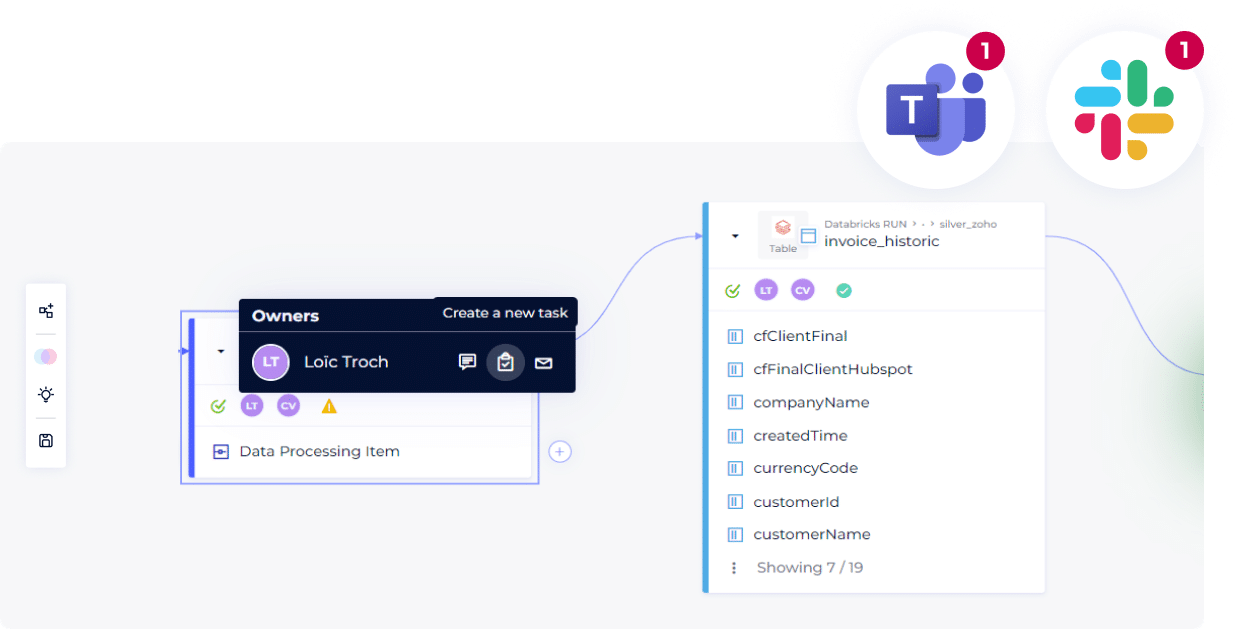As data ecosystems grow more complex, ensuring the health and quality of that data becomes a serious challenge.
Much like observability in software engineering, data observability offers a window into the health of your data systems. This enables teams to proactively monitor, detect, and resolve issues before they snowball.
This blog post will explore data observability, why it’s essential for modern organizations, and how it plays a critical role in building high-performing, reliable AI systems.
What is data observability?
Data observability is the ability to understand, track, and manage the health and quality of data within an organization's systems. It allows businesses to identify and resolve data issues before they spiral, ensuring smooth operations and better decision-making.
Data observability is a proactive approach to data management that allows businesses to gain insights and recognize issues in their data ecosystem.
This can be done in real time, contributing to enhanced decision-making. Data observability provides full visibility into the health of data and data systems, so users are the first to know when the data is wrong, what broke, and how to fix it.
Data observability often works with a data governance platform’s preexisting tools, such as anomaly detection, accelerated root cause analysis capabilities, and end-to-end data lineage.
This approach results in healthier data pipelines, increased team productivity, enhanced data management practices, and, ultimately, higher customer satisfaction.
Using AI tools for increased data observability
Ensuring data quality and cost efficiency has become a critical priority for modern businesses.
High-quality data leads to better decision-making, while optimized cost management ensures that resources are used efficiently. Businesses can address both these concerns simultaneously through AI-driven data observability.
CDO Masterclass
Upgrade your data leadership in just 3 days
Join DataGalaxy’s CDO Masterclass to gain actionable strategies, learn from global leaders like Airbus and LVMH, and earn an industry-recognized certification. This immersive program equips data professionals to drive impactful, data-powered transformations.
Just as data observability can increase the efficiency of AI tools, specific AI tools can also help organizations increase their data observability.
AI enhances data observability by automating monitoring tasks, rapidly detecting anomalies, and predicting potential issues before they impact the business.
Such automation enables companies to optimize data management in real-time, preventing costly errors and improving overall efficiency. AI is no longer a futuristic tool but an essential component of industry data observability strategies.
Understanding the role of data observability in AI tools
Data observability is key to developing and deploying AI systems. It ensures that the data driving these systems is top-notch and provides a clear view of data flows and dependencies, helping organizations identify and resolve data issues.
This oversight is critical for maintaining data integrity and tracking data lineage in the AI pipeline.
Data observability in AI means monitoring the data from the very start. This includes watching how data is fed in, cleaned, and used to train models.
Looking at the data at every step helps teams spot problems early. This proactive approach is vital for building reliable AI on sound data.
Using data observability in AI tools has many advantages: It improves data quality and makes AI models more reliable, leading to more transparent and dependable AI that also meets governance standards.
Improved data quality & integrity
Enhanced AI model performance & reliability
Increased transparency & trust in AI systems
Streamlined data governance & compliance
Faster issue detection & resolution
Organizations that prioritize data observability enhance their AI projects by tapping into AI's full potential while reducing the risks of handling questionable data.
As the need for reliable AI grows, mastering data observability is key to creating trustworthy and transparent AI systems.
However, data observability does more than improve AI models. It also makes data rules and privacy easier to follow, which builds trust and meets rules about data use.
Data observability best practices for AI projects
It's vital to use top data observability practices in AI projects to ensure they come out right. It involves setting clear data quality standards, checking data often, and auditing data. This keeps data quality high and creates faith in the AI system.
Data observability to drive high-quality AI
Data observability is key to making strong AI systems. It gives a full look at data flows. This way, companies can keep AI models in good shape and understand how they work. Let's see how data observability makes AI better.
Ensuring reliable AI models
Data observability makes AI models trustworthy. It monitors data for any issues, ensuring the data used to train AI is good and lowering the chance of mistakes. With trustworthy AI, companies can better serve their customers.
If there are data problems, data observability spots them early. It uses alerts to catch issues fast. This prevents AI models from being less accurate and makes AI systems run smoother and more reliably.
Enhancing AI explainability & transparency
Data observability also makes AI easier to understand. It shows where the data comes from and how it’s used in AI. This is important in knowing why AI makes certain choices.
Why DataGalaxy?
Finding the right data catalog is more crucial than ever
But with so many options available, how do you know which one is truly the best fit for your needs? Discover how DataGalaxy can help take your company’s data strategy to the next level.
We understand the challenges of getting your team to fully embrace a new tool. That’s why we’ve made our data catalog user-friendly and intuitive with a simple and straightforward interface that your team can adopt in no time.
Plus, with integrations for popular platforms like Slack and Microsoft Teams, your teams can access and utilize the data they need without having to learn new tools.
Tracking data lineage helps see data’s journey in AI models. It shows how data changes and moves. This transparency makes everyone understand AI's decisions better. It also helps follow rules about data use and makes AI more fair and unbiased.
Data observability lets teams look closely at data and its effect on AI. This way, they can find what drives AI's actions. Understanding these details is key to fixing issues and making AI work better.
In short, data observability is crucial for top-notch AI. It makes AI models reliable and easy to understand. This builds trust and brings more benefits from using AI. Using data observability rights is necessary for AI projects to do well and be fair.
Conclusion: Understanding the need for data observability
As data becomes increasingly central to business success and AI continues to evolve, data observability is no longer a nice-to-have: It's a necessity.
By providing real-time insights into data health, streamlining root cause analysis, and ensuring consistent data quality, data observability empowers organizations to build more reliable, transparent, and compliant AI systems.
Leveraging AI tools for observability further enhances this process, automating monitoring and improving responsiveness.
Ultimately, businesses that prioritize data observability are better equipped to unlock the full potential of their data and AI initiatives, driving more intelligent decisions, reducing risk, and staying ahead in a competitive landscape.
Fueling smarter decisions for
200+ industry powerhouses.











